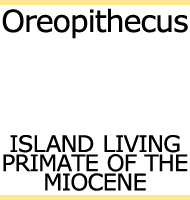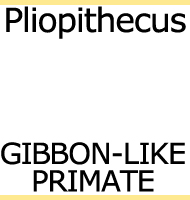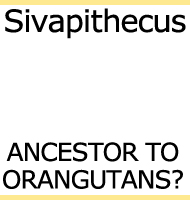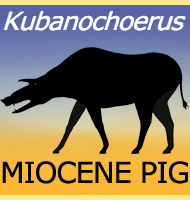


Propliopithecus
Name:
Propliopithecus
(Before Pliopithecus).
Phonetic: Pro-ply-o-pif-r-kus.
Named By: Schlosser - 1911.
Synonyms: Aeolopithecus, Moeripithecus.
Classification: Chordata, Mammalia, Primates,
Hominoidea, Pliopithecidae.
Species: P. haeckeli (type), P.
ankeli, P. chirobates.
Diet: Frugivore.
Size: 40 centimetres long.
Known locations: Egypt, Fayum Province - Jebel
Qatrani Formation.
Time period: Rupelian of the Oligocene.
Fossil representation: Several specimens.
Like
with Pliopithecus,
the genus after which it was named,
Propliopithecus was a gibbon-like ape that lived in
Northeast Africa
during the early Oligocene (back in this time Egypt had an extensive
covering of vegetation unlike the arid desert conditions that we know
today). Propliopithecus would have lived in the
tree canopy where
its stereoscopic vision (granted by both eyes facing forwards)
would have allowed it to travel and reach and across for food with
ease. The teeth which have a light enamel covering are most suited to
a diet of fruits that would not require strong teeth or jaws to process.
There
is speculation that another primate called Aegyptopithecus
is actually
the same as Propliopithecus. Both are known from
the same Formation
of Egypt, from the same time period and both are similar in form,
yet there is no universally accepted decision about whether they
are the same or not. Should a decision be made that confirms they are
the same; Aegyptopithecus will become another
synonym to
Propliopithecus since this genus was named several
decades before
Aegyptopithecus.
Further reading
- New fossil apes from Egypt and the initial differentiation of
Hominoidea. - Nature 205:135-139. - E. L. Simons - 1965.
- A new species of Propliopithecus from the Fayum, Egypt. - American
Journal of Physical Anthropology 73(2):139-147. - E. L. Simons, D. T.
Rasmussen & D. L. Gebo - 1987.
----------------------------------------------------------------------------
Random favourites
 |
 |
 |




